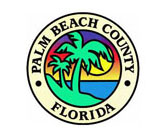Assistant County Administrator Shannon LaRocque led a presentation Tuesday on the county’s action plan for fiscal year 2015-16 for federal financing it receives from the Department of Housing & Urban Development, as well as a five-year strategic plan.
LaRocque said that the county’s Department of Economic Sustainability has made significant progress over the past five years, including the delivery of public services and emergency shelter to more than 22,000 county residents, and the construction of the county’s first homeless resource center, which is now in full operation.
It has also hurricane-hardened or rebuilt about 2,500 affordable housing units, and leveraged more than $74 million in private development equity to build new, high-quality and energy-efficient housing communities for low-income and moderate-income seniors, individuals and families.
The construction of more than $37 million in infrastructure has come about in partnership with local municipalities and county departments, she said, adding that more than 2,800 jobs were created through HUD’s loan program.
Ed Lowery, director of the Department of Economic Sustainability, said the plan for the next five years will be the guiding document for the use of grant money received from HUD.
“The plan identifies needs in the areas of housing, economic and community development, and sets forth broad strategies for the use of Community Development Block Grant [CDBG] home investment partnership and emergency solution funds for a period of five fiscal years,” Lowery said. “The county’s plan is designed to be proactive and flexible in order to respond to a wide variety of changing community needs.”
As an example, he said, following the back-to-back hurricane seasons of 2004 and 2005, the county received $43 million in CDBG-based funding from the state. “This flexibility allowed our department to hit the ground running and facilitate critically needed housing repair, new housing development and infrastructure improvements,” he said.
Lowery explained that the 2015-2020 plan is stakeholder-driven and the process began in December 2014 with public meetings, meetings with municipal partners, various county departments, private nonprofits, housing authorities, developers, community redevelopment agencies and economic development entities, as well as various homeless advocacy organizations.
Sherry Howard, deputy director of the Department of Economic Sustainability, said the plan takes the market into consideration, such as population growth and median incomes.
The county population in 2010 of 1.32 million is expected to grow 6.4 percent by 2020 to 1.47 million. The median household income, which fell from $67,000 in 2010 to $63,000 in 2011, and again from $64,600 in 2013 to $63,300 in 2014, grew to $64,900 in 2015.
A total of 557,000 (71.6 percent) of households are owners, while 158,000 (28.4 percent) are renters. Ownership exceeds the statewide rate of 67.6 percent, Howard said.
About 44 percent of renters and 35 percent of owners suffer severe housing problems such as paying 50 percent or more of income for their rent or mortgage, overcrowding with 1.5 or more persons per room, or substandard conditions such as the lack of a complete kitchen, plumbing or air conditioning.
The overall strategic plan goals are for decent housing by retaining and improving affordable housing stock; expanding economic opportunities by creating jobs and providing services and capital to new and expanding businesses; and creating a suitable living environment by improving safety and livability of neighborhoods and increasing access to public facilities and services.
The plan also provides goals to help the homeless, including rapid re-housing, emergency shelter, transitional housing and permanent supportive housing, as well as homeless prevention programs such as emergency rent or utility assistance. Special-needs service goals are to help the elderly, persons with disabilities, persons with HIV/AIDS, victims of domestic violence and those with chemical addictions.
It also plans to add more public facilities such as parks and recreation, homeless facilities, community and senior centers, and youth facilities. It will also assist in providing infrastructure to areas where the population cannot afford to pay, including roads, sidewalks, potable water, sewer and drainage.
The local municipalities of Wellington and Royal Palm Beach participate in HUD programs but on a much smaller scale, mainly in financing for handicapped-accessible improvements for homes and some aid to seniors who cannot afford to maintain their homes.
Royal Palm Beach Village Manager Ray Liggins said only one area of the village qualifies for CDBG grant funding, and the village is looking for ways to try to get access for those in need of the services.
The village is also looking for ways to obtain Americans With Disabilities Act grants for sidewalks and road crossings.
“The county acts on our behalf as it relates to homes, and the people can apply directly to the county for specific housing improvement such as HUD grants,” Liggins said. “We don’t do it directly anymore.”
Wellington Director of Community Services James Poag said the village currently invests CDBG funding primarily in ADA sidewalk improvements.
“We’ve allocated a small amount of dollars to some housing rehabs for some of our elderly citizens,” Poag said. “In addition, we’ve used some of our outreach funding for a youth mentoring program. We are required to have a housing outreach component that talks about fair housing and things of that nature, so we’ve allocated a portion to that also.”
Poag said only 15 percent of the funding may be used for outreach such as mentoring and a senior transportation program. “The remainder has to be dedicated to housing or something of that nature,” he said, explaining that the funding for Wellington comes directly from HUD.
The total allocation for Wellington this fiscal year was $235,000 based on the village’s qualifications for funding.








